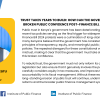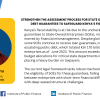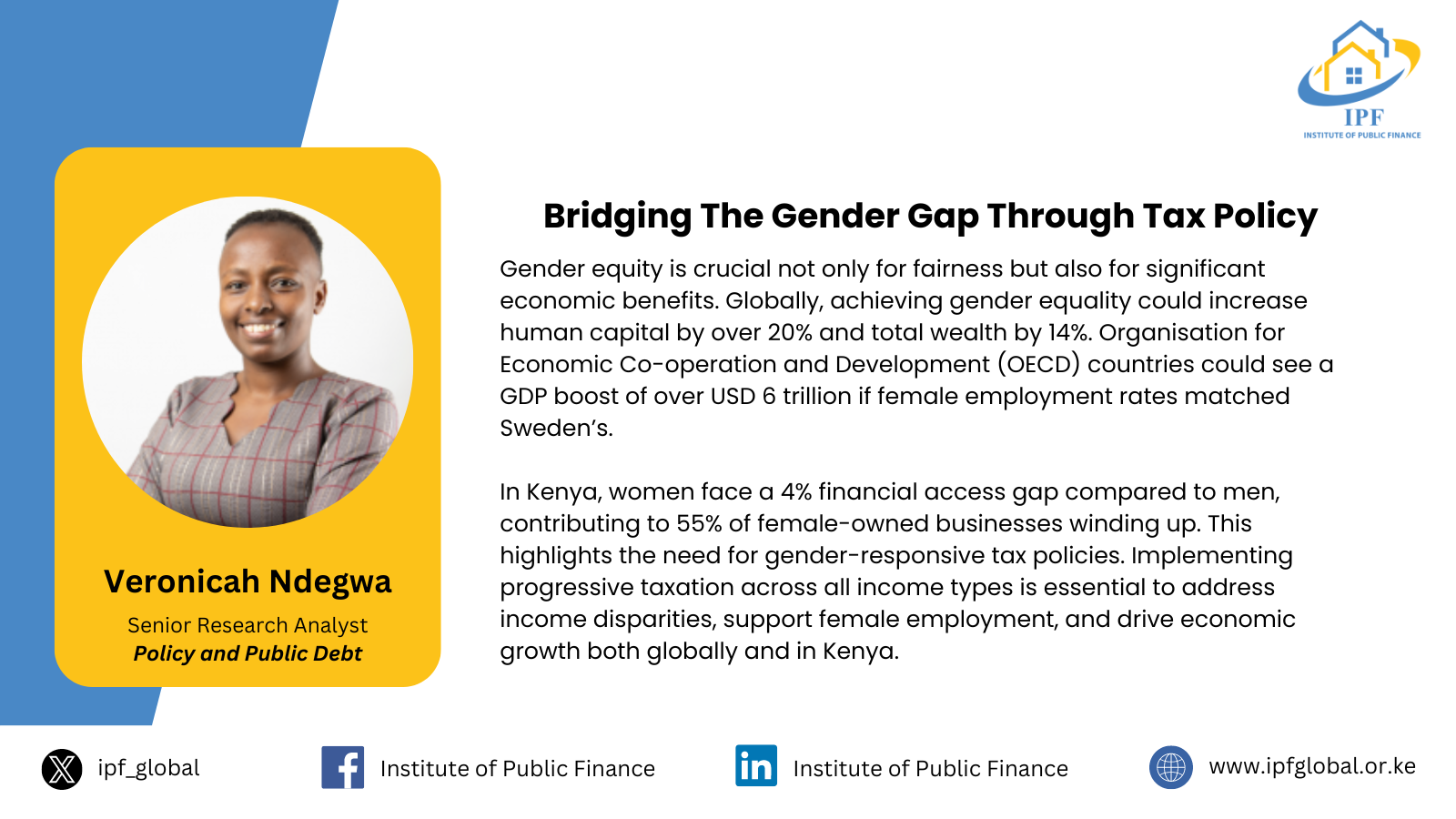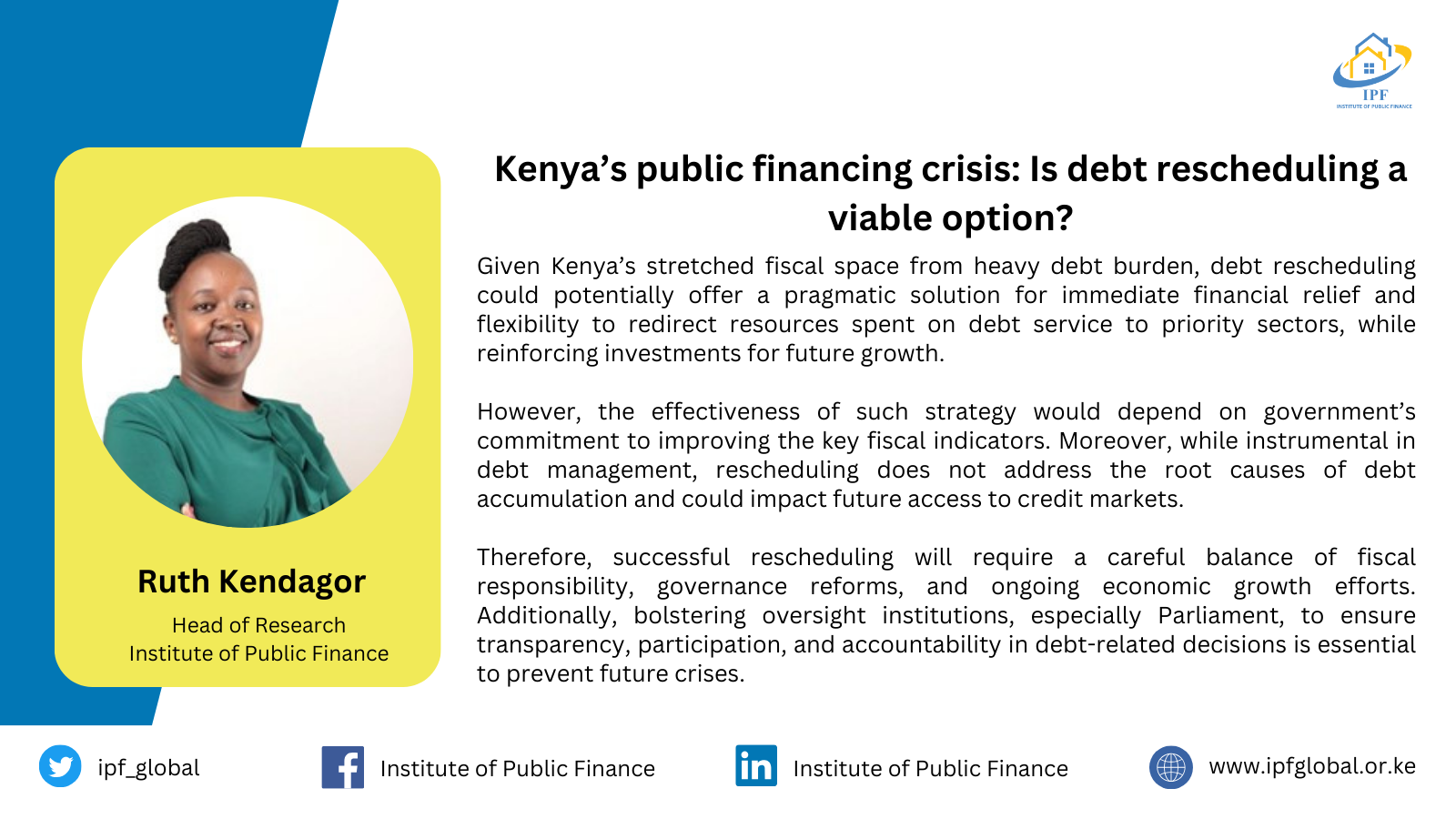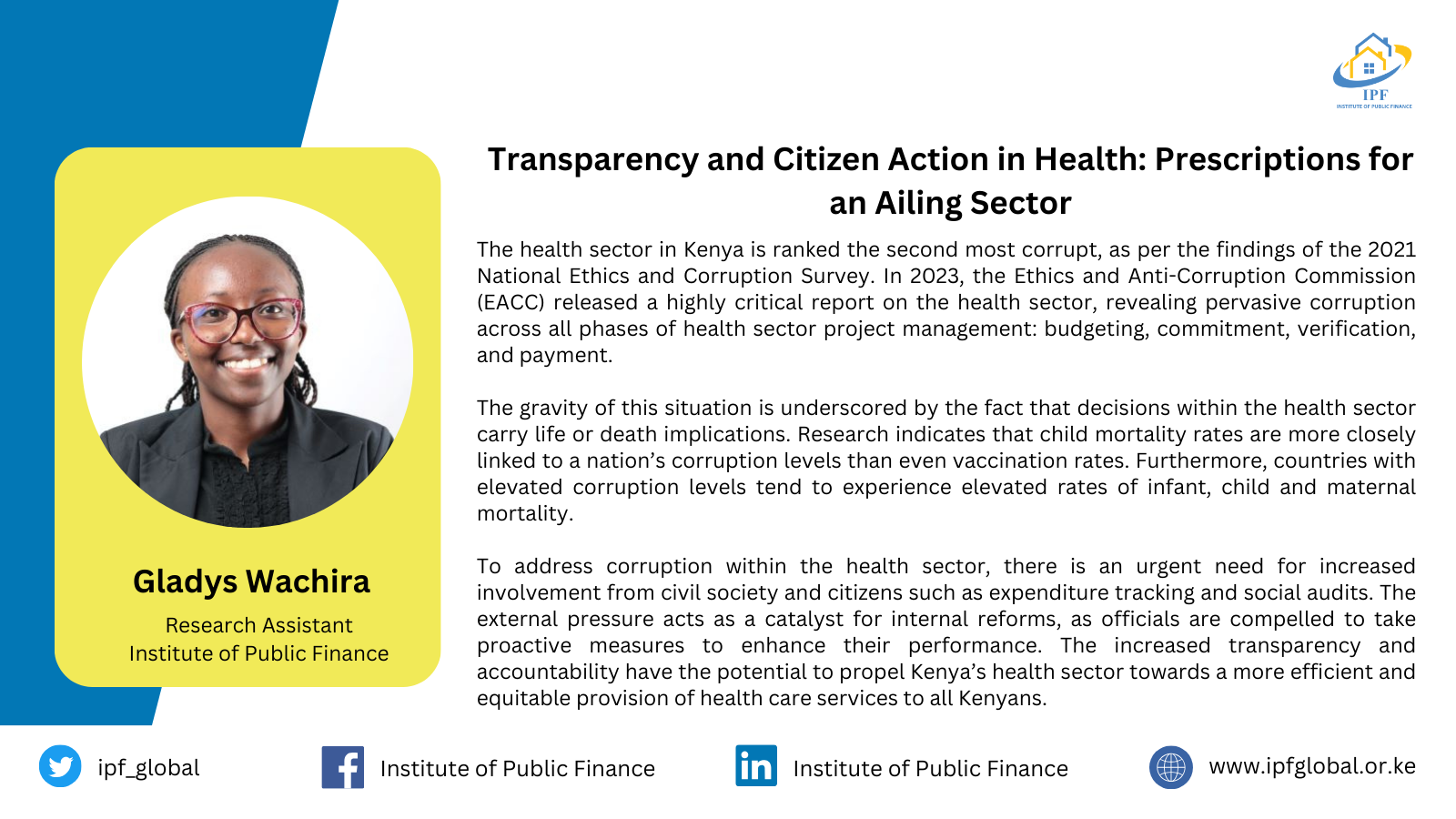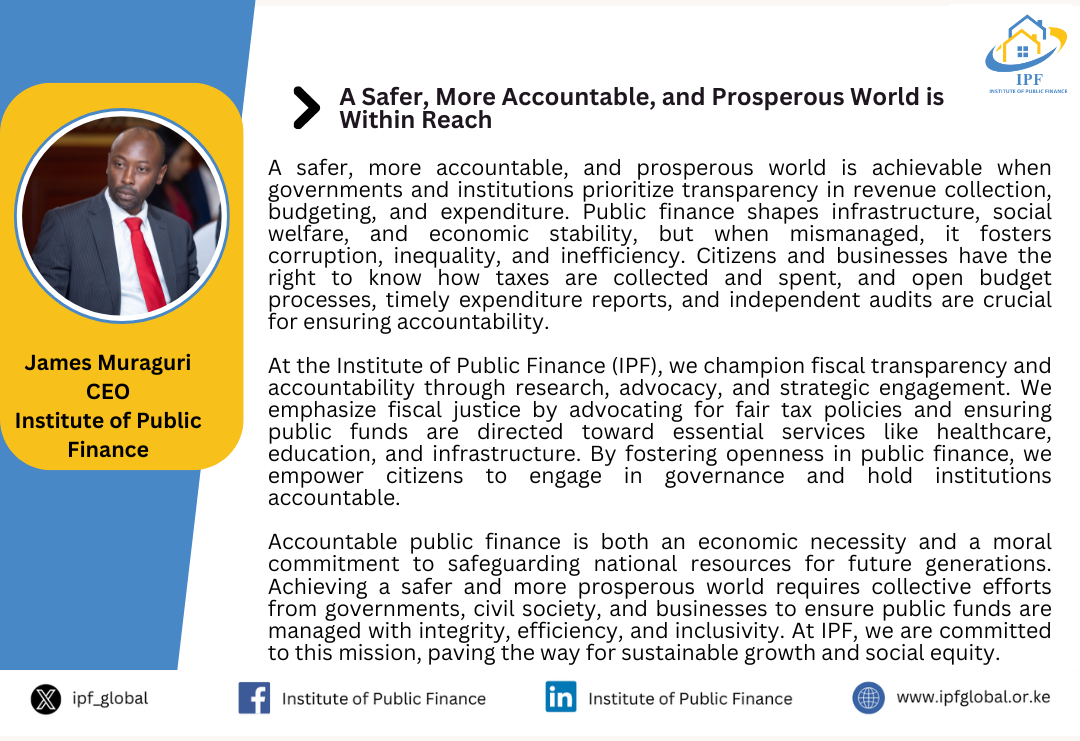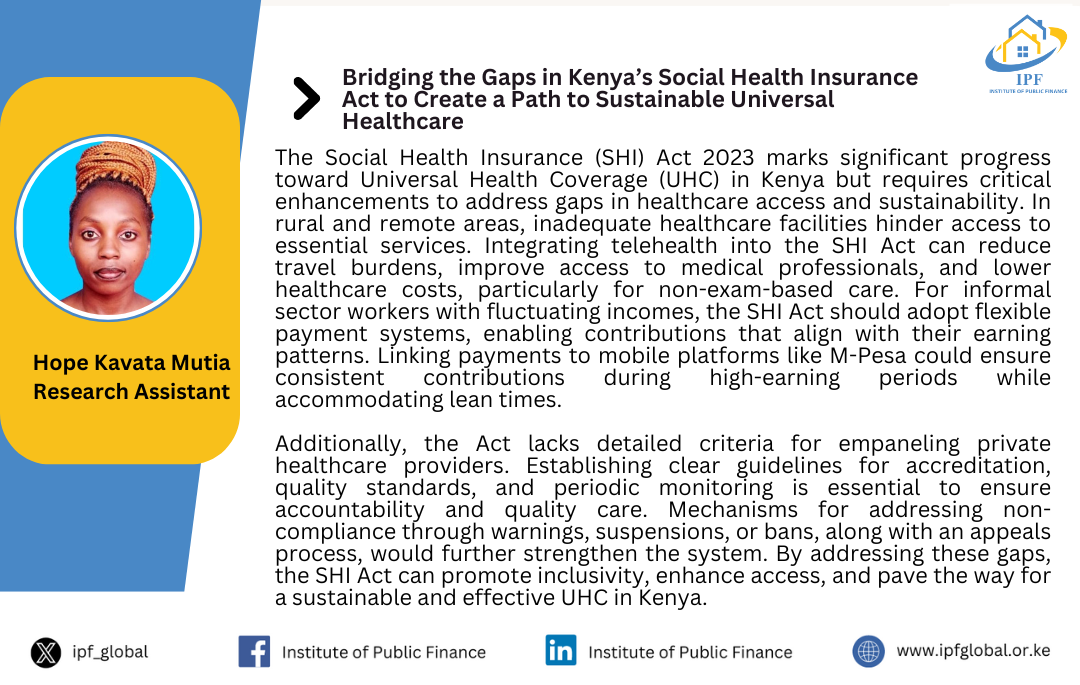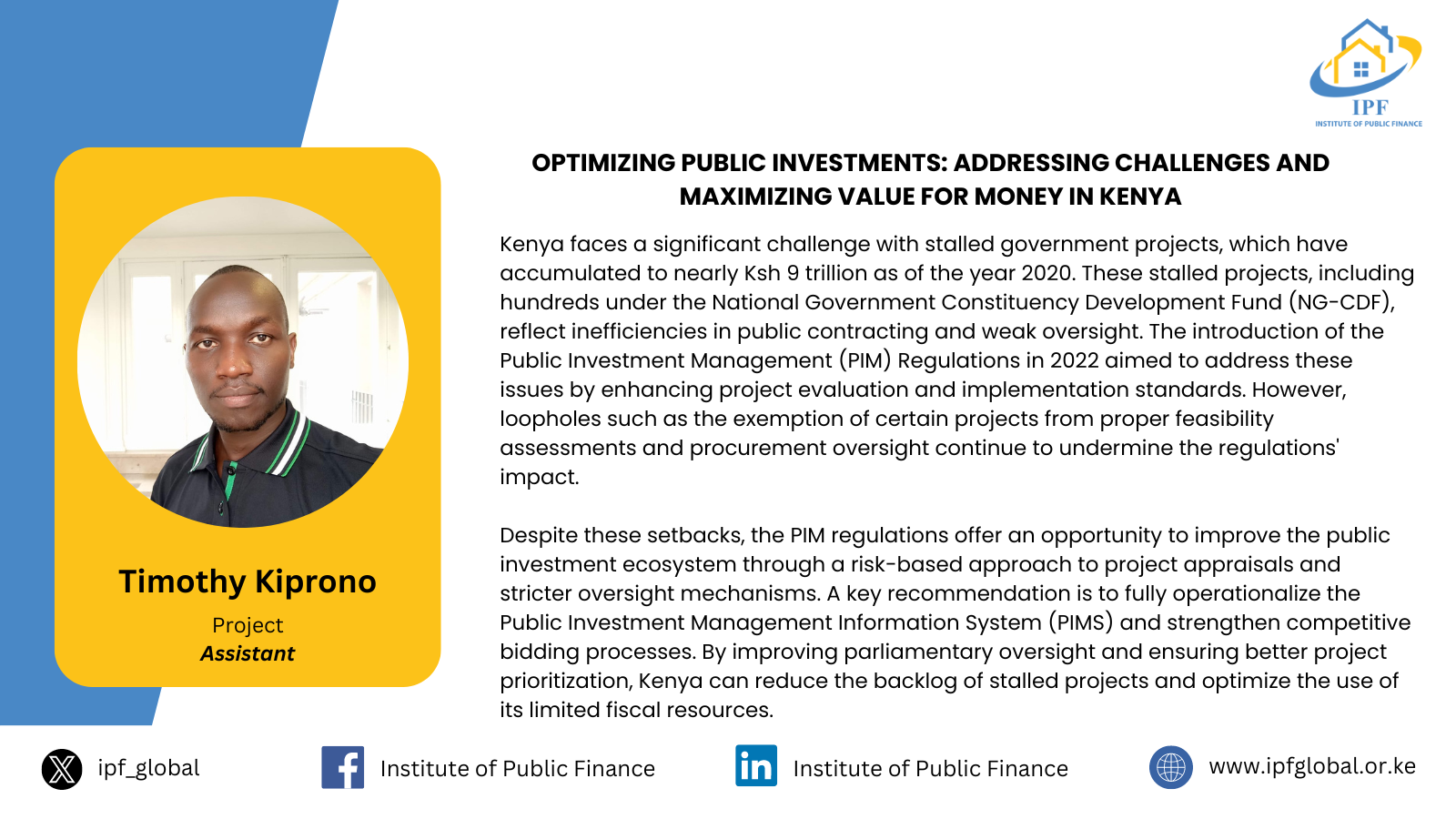
Introduction
As of 2020, the estimated value of stalled government projects in Kenya was nearly Ksh 9 trillion, spanning several administrations. This includes nearly 700 projects under the National Government Constituency Development Fund (NG-CDF) and over 500 managed by other government agencies.[1]. Stalled projects refer not only to those that were never completed, but also to those that were completed but never operationalized. Amid these stalled projects, Kenyans remain underserved as the government struggles to meet development and service demands. If this issue is not addressed in a timely manner, Kenya will continue to lose resources it cannot afford to waste. The stalling of projects results from various causes including, limited feasibility assessments to ascertain viability and value for money, inefficient public contracting processes and weak oversight.[2] These challenges highlight systemic weaknesses in Kenya’s public investment ecosystem.
To address these challenges, the government introduced the Public Investment Management (PIM) Regulations in 2022. However, exemption of certain projects from feasibility and appraisal processes, existing weaknesses in procurement laws and inadequate parliamentary oversight both at appraisal and implementation stages limit the effectiveness of these regulations. Moving forward, the government should adopt a risk-based approach to project evaluation that prioritizes in-depth appraisals for all high-risk or complex projects, regardless of their cost and size. Additionally, the government should adopt clearer and stricter justifications for exempting public investments from competitive procurement procedures and ensures the separation of powers between project execution and oversight roles, particularly in the management of NG-CDF funded projects.
An attempt to strengthen Kenya’s Public Investment Governance: The Public Investment Management (PIM) Regulations 2022.
Kenya’s PIM regulations, aligned with international standards such as the OECD’s Integrity Framework for Public Investment and IMF recommendations, were designed to enhance the management of public investments. These regulations introduce a standardized approach to project cycle management, mandating comprehensive appraisals of public investments.
The PIM regulations provide for the implementation of an accessible Public Investment Management Information System (PMIS), which emphasizes citizen participation throughout the project cycle while providing real-time access to project implementation status informing the investment decision-making process. Public Investment Management Units are responsible for analyzing, reviewing, and appraising proposed projects before approval while a Resource Allocation Panel is responsible for reviewing project implementation performance including documentation and reporting of ongoing projects and their future financial commitments.
These institutions aim to create an objective investment system that is synchronized with the budget process, preventing the approval and financing of inefficient and cost-ineffective public investment projects while safeguarding against the financing of new projects ahead of ongoing and incomplete ones.
Challenges and opportunities
However, significant challenges persist. Firstly, the PIM Regulations exempt projects costing less than Ksh. 500 million from feasibility studies and appraisals. The absence of proper evaluation makes it difficult to ensure that these numerous small projects, whose total costs can add up to a significant portion of large projects, deliver maximum value for every shilling spent. For example, there are 263 small road projects in the 2024/25 State Department of Roads budget valued at Ksh. 19 billion, accounting for 17 percent of the total project value. In sectors such as health and education, these small projects include hospitals and classrooms whose operational costs, if completed, could put significant pressure on the budget.
Secondly, the regulations may be rendered ineffective due to weaknesses in the Public Procurement and Disposal Act (PPDA) 2012. Although Kenya has established protocols for competitive bidding, a recent study reveals that over 75 percent of procurement records in the Public Procurement Information Portal (PPIP) bypassed competitive procurement. Ambiguous justifications for exemptions under Ksh30 million raise concerns about the efficiency of procurement processes in safeguarding public investments. Even if project design follows best practices, these efforts can be undermined at the implementation stage if procurement, which represents more than 10 percent of Kenya’s economy, is flawed.
Thirdly, the Project Implementation Management System (PIMS) remains largely non-operational, two years after the PIM Regulations took effect, highlighting significant gaps in implementation. As of this writing, the system records only 50 ongoing projects, with no completed or stalled projects listed. It is highly unlikely that only this small number of projects has been implemented since the regulations were enacted, or that there have been no stalled projects in Kenya, despite official public records.
Lastly, the success of the PIM Regulations depends on parliamentary oversight during both the appraisal and implementation stages. However, for some procurement processes, such as those carried out under the NG-CDF, Parliament faces a conflict of interest. The involvement of Parliament in project implementation under NG-CDF weakens the legislative oversight expected by the PIM Regulations. While these NG- CDF projects constitute a small portion of overall procurement in Kenya, they impact every corner of the country.
Recommendations
To reduce the stock of stalled projects, changes to the current regulations and legal frameworks are necessary. Rather than exempting projects from the PIM regulations below a certain threshold, Kenya should adopt a broader approach to risk-based review. While individual small projects may not pose high financial risks, their cumulative volume carries substantial fiscal risk exposure. Lower-risk projects could undergo a streamlined evaluation process that safeguards against both qualitative and financial risk exposures. Therefore, the government should develop cost-effective methods for appraisal, including leveraging technology, ensuring that value for money and low fiscal risk remain priorities without incurring excessive appraisal costs. Additionally, PIMS should be fully operationalized to provide a complete register of all projects in Kenya, along with their costs and completion status.
At the same time, Kenya should strengthen protocols for competitive bidding by setting stricter requirements for exempting project contracts from competitive procurement. Similarly, measures should be put in place to safeguard the separation of powers between the three arms of government, beginning with the removal of NG-CDF management from Members of the National Assembly to provide the much-needed oversight in the execution of projects
Conclusion
In conclusion, by implementing an objective public investment system that mandates feasibility studies and appraisals for all high-risk projects alongside their cost and committing resources for ongoing projects, Kenya can optimize its public investments within the current constrained fiscal space.
By Timothy Kiprono, Project Assistant.
References[1] http://libraryir.parliament.go.ke/handle/123456789/2678
[2] http://www.parliament.go.ke/sites/default/files/2021-01/Budget%20Options%20Final%2028.1.2021.pdf

